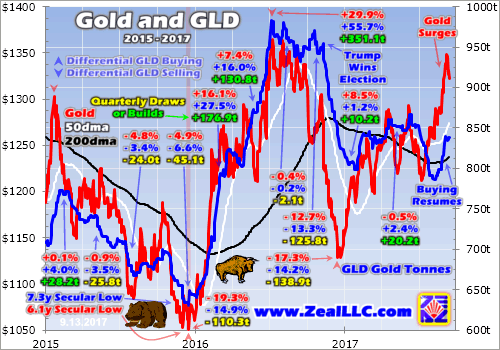 Gold has surged dramatically to major breakouts since its usual summer-doldrums lows. That’s naturally rekindled interest in this leading alternative investment, despite the record-high stock markets. Investors are starting to return to gold again to prudently diversify their stock-heavy portfolios. That’s very bullish for gold, as investment capital inflows can persist for months or even years. This shift is most evident in GLD.
Gold has surged dramatically to major breakouts since its usual summer-doldrums lows. That’s naturally rekindled interest in this leading alternative investment, despite the record-high stock markets. Investors are starting to return to gold again to prudently diversify their stock-heavy portfolios. That’s very bullish for gold, as investment capital inflows can persist for months or even years. This shift is most evident in GLD.
The American SPDR Gold Shares is the world’s leading and dominant gold exchange-traded fund. Since its birth way back in November 2004, it has acted as a conduit for the vast pools of stock-market capital to migrate into and out of physical gold bullion. The marginal gold investment demand, and sometimes supply, via GLD can be big and varies wildly. Thus GLD-share trading is often gold’s primary short-term driver.
The definitive arbiter of global gold supply and demand is the venerable World Gold Council. It publishes highly-anticipated quarterly reports called Gold Demand Trends. They offer the best reads available on global gold fundamentals. At first glance, it’s not apparent why gold-ETF demand plays such a massive role in driving gold’s price action. But digging a little deeper makes this crucial-to-understand relationship clearer.
According to the WGC, over the past 5 years from 2012 to 2016 jewelry demand averaged about 54% of overall global gold demand. Total investment demand including physical bars and coins in addition to gold ETFs averaged just 26%. Breaking that category down further into bars and coins separate from ETFs, they weighed in at averages of 28% and -2% of world gold demand respectively over the past 5 years.
This post was published at ZEAL LLC on September 15, 2017.

 Follow on Twitter
Follow on Twitter
Recent Comments